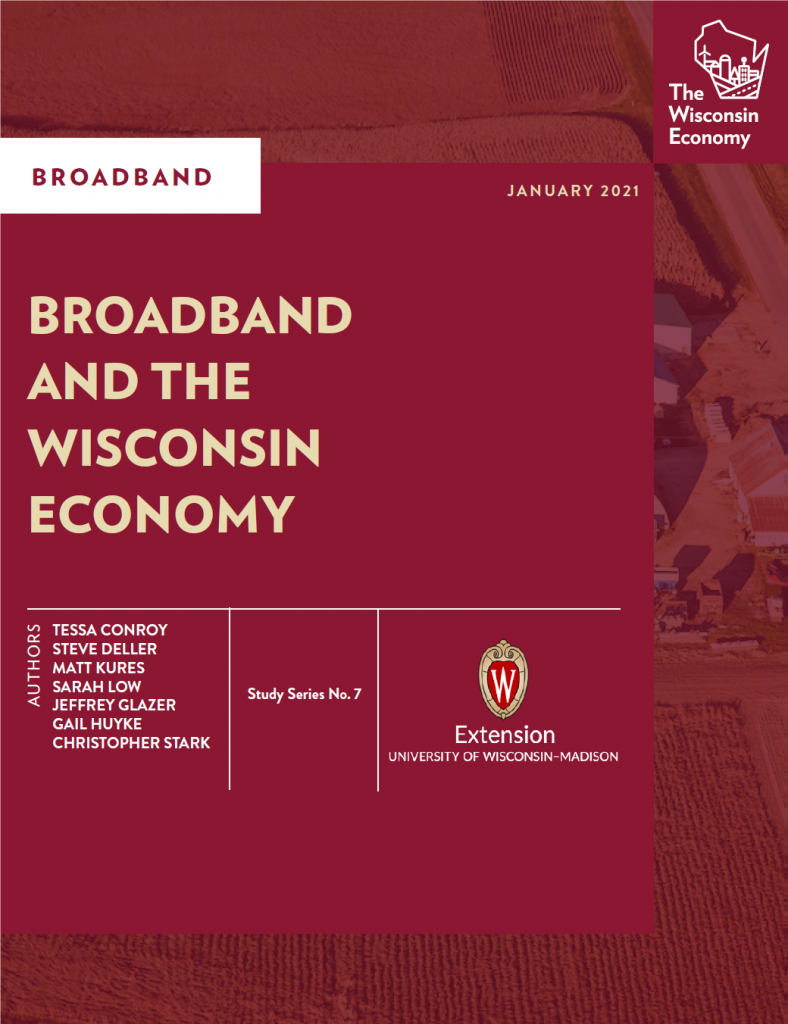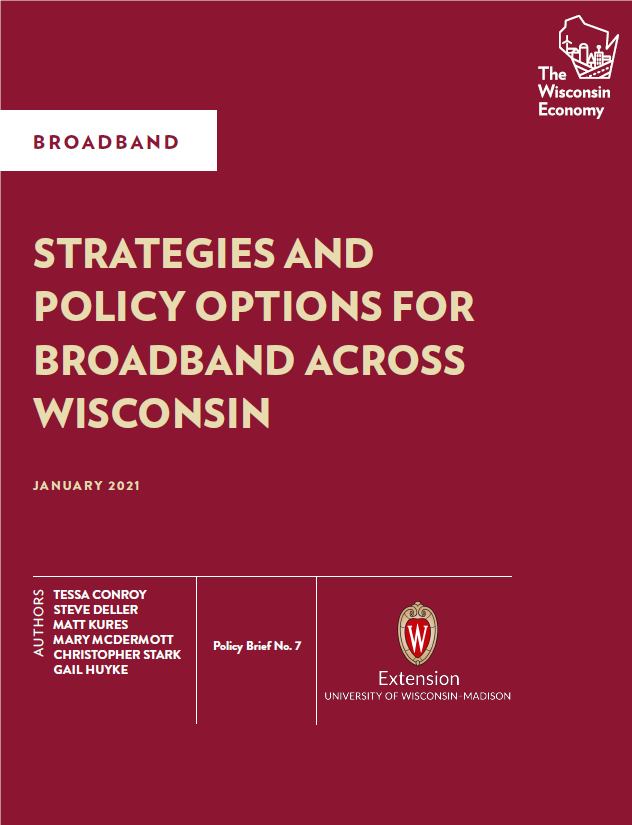EXECUTIVE SUMMARY
January 2021 — In this study we explore issues related to broadband coverage and importance of coverage to community well-being. Several key conclusions include:
- Broadband access is closely related to population density and income levels, meaning the most rural and the lowest-income regions generally have the least access. For example, in urban Wisconsin, more than 95% of households have broadband access whereas, in the most rural counties, just 63% have access. Yet, regardless of their location on the rural-urban continuum, low-income households have the least access. Even in the most urban areas of the U.S., 44%of households earning less than $20,000 have no internet. In the most rural areas, 56% of these low-income households have no internet.
- Explanations for the lack of service in rural and low-income regions include a low return on investment for providers, which is linked to the expense of new infrastructure and the low density of potential subscribers. Even if broadband service is possible, some areas feature low demand for broadband and the expense of service can be a barrier.
- Bureaucratic barriers severely constrain municipal provision in Wisconsin and data limitations make it difficult for communities to show need, which is often an important component of grant applications. Furthermore, there has been less federal investment in broadband compared to analogous infrastructure such as highways and electrification.
- Broadband is becoming increasingly important to community and economic well-being. It is linked to better business performance, including rural entrepreneurship and farm profits. It is also linked to higher home values and higher educational outcomes at both the grade school and high school levels. Broadband access also corresponds to improved health outcomes, which can lead to higher worker productivity.
- In Wisconsin, local conditions vary widely and likely require different approaches or a combination of more than one approach in order to improve access. Consider a range of challenges and potential paths forward:
- The most underserved areas are typically rural and likely do not have sufficient infrastructure. Accordingly, these areas may want to prioritize strategies and policies that encourage the development of physical resources needed to provide access.
- Some regions, such as pockets of Milwaukee and Madison, likely have the infrastructure, but many low-income households are still without service. This gap in broadband access points to issues around affordability.
- Some communities seemingly have broadband service available based on provider-reported data from the FCC, yet many households are without service. This may be a sign that the FCC data does not accurately depict broadband availability—a concern of many broadband grant applicants. These places could benefit from policies that improve broadband data or create alternate means of showing need.
- Communities that have broadband available but still have households without service may be facing a demand issue or, in other words, low adoption of the technology. These areas could choose to implement outreach and education strategies that note the benefits of broadband and encourage its use.
- While there has been some improvement in the digital divide across Wisconsin, the experiences of COVID-19 and the resulting movement to telecommuting for many workers and online learning for both K-12 and higher education students demonstrates that much work needs to be done.
Fact Sheets




 Broadband 101: Broadband Defined
Broadband 101: Broadband Defined What's Next in Wisconsin Broadband, December 2025
What's Next in Wisconsin Broadband, December 2025 Broadband Expansion in Wisconsin: Case Studies - Page 3
Broadband Expansion in Wisconsin: Case Studies - Page 3


